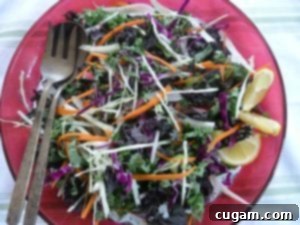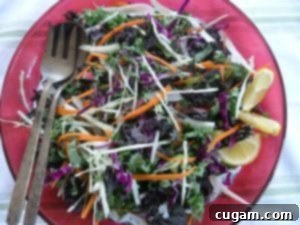Revitalize Your Health: A Comprehensive Guide to Post-Holiday Detox and Sustainable Wellness
Getting Back on Track: Your Simple Post-Indulgence Reset
The festive season often brings with it a delightful array of indulgences – delicious foods, celebratory drinks, and a relaxed schedule. While these moments are essential for joy and connection, they can sometimes leave us feeling sluggish, bloated, and generally off-kilter. Perhaps you, like many, found yourself enjoying an extra serving of dessert, a few too many savory snacks, or simply letting go of your usual healthy routines during the holidays. It’s a common experience, and there’s absolutely no need for guilt.
The good news is that getting back on track doesn’t have to be about extreme measures or deprivation. Instead, it’s about gently nudging your body back into balance, supporting its natural detoxification processes, and re-establishing habits that make you feel vibrant and energized. This guide will walk you through a simple, effective approach to a post-indulgence reset, focusing on nourishing foods, mindful practices, and a fantastic “Lemony Detox Salad” to kickstart your journey to renewed well-being.

Understanding the Impact of Overindulgence and How to Counter It
When we consistently consume foods that are high in sugar, unhealthy fats, refined grains, and processed ingredients – common culprits during celebratory periods – our bodies can become overburdened. These types of foods are often considered “acid-forming” in the context of dietary pH balance, contributing to an internal environment that can lead to various unwelcome symptoms. This acidic shift can manifest as increased inflammation throughout the body, which might show up as skin irritations, joint pain, or even headaches. Digestive issues like bloating, indigestion, and irregularity are also frequent complaints, as our systems struggle to process the unfamiliar load. Furthermore, poor food choices can disrupt sleep patterns and contribute to unwanted weight gain.
The key to counteracting these effects lies in embracing a diet rich in “alkalizing” foods. These are typically fresh fruits and vegetables, which are packed with essential vitamins, minerals, and antioxidants. These nutrients are vital for replenishing your body’s depleted stores and supporting cellular function. Moreover, an abundance of dietary fiber, found in whole plant foods, acts like a natural internal cleanser. Fiber helps sweep accumulated waste and toxins from your digestive tract, promoting regular bowel movements and preventing their reabsorption. By focusing on nutrient-dense, fiber-rich, and alkalizing foods, you empower your body to heal, reduce inflammation, improve digestion, and naturally shed excess water and weight, paving the way for a more energetic and comfortable you. So, how can we translate this knowledge into practical, delicious steps starting today?

The Power of the Lemony Detox Salad: Ingredients and Their Benefits
A fantastic and highly effective first step in your wellness reset is to prepare a vibrant, nutrient-packed salad that actively supports your body’s detoxification pathways. This isn’t just any salad; it’s a strategically designed blend of ingredients chosen for their potent cleansing and revitalizing properties. Having a large batch of this “Lemony Detox Salad” ready in your refrigerator makes healthy eating incredibly convenient and sets you up for success.
Let’s explore the powerful benefits each key ingredient brings to the table:
- Celery: Far more than just a crunchy snack, celery is a powerhouse for reducing systemic inflammation. It’s loaded with magnesium, a critical mineral involved in over 300 biochemical reactions in the body, including maintaining electrolyte balance and regulating the body’s pH. Its high water content and natural diuretic properties also aid digestion and can help lower “bad” cholesterol and blood pressure.
- Cabbage (Green & Purple): Both green and purple varieties of cabbage are exceptionally rich in fiber, which is crucial for promoting healthy elimination and clearing out the digestive system. Beyond fiber, cabbage is an excellent source of Vitamin C, a powerful antioxidant that boosts immunity, and Vitamin K, essential for blood clotting and bone health. Its compounds also play a role in regulating blood sugar levels.
- Kale: Often hailed as a superfood, kale lives up to its reputation. It’s a nutritional goldmine, providing significant amounts of Iron, Vitamin C, Vitamin K, and Vitamin A. As a potent antioxidant and anti-inflammatory food, kale helps protect your cells from damage and reduces inflammation. Its calcium content supports bone health, and its high fiber content is particularly beneficial for binding to and eliminating toxins from the body.
- Fennel: This aromatic vegetable offers a refreshing crunch and significant health benefits. Fennel is well-known for its anti-inflammatory properties and its ability to support the immune system, primarily due to its Vitamin C content. It’s also a good source of fiber and potassium, aiding in digestion and maintaining healthy fluid balance.
- Radish: These peppery root vegetables are not only delicious but also highly beneficial for detoxification. Radishes are rich in fiber, which supports digestive regularity, and Vitamin C, an important antioxidant for immune health. They are also known to help cleanse the liver and stomach.
- Lemon: The star of the dressing, lemon is a natural detoxifier. Its high Vitamin C content supports the immune system and acts as an antioxidant. Lemon juice stimulates bile production, which helps in the digestion of fats and the elimination of waste products from the liver. Its alkalizing effect on the body also helps to balance pH levels.
- Carrots: Bursting with color and nutrition, carrots are an excellent source of Beta-carotene, which the body converts into Vitamin A. Vitamin A is crucial for vision, immune function, and skin health. Carrots also provide a good dose of antioxidants, protecting cells from oxidative stress.
Together, these ingredients create a synergistic effect, providing a comprehensive boost to your body’s cleansing mechanisms.

Beyond the Plate: Holistic Wellness Tips for a Complete Reset
While focusing on nutrient-dense foods like our Lemony Detox Salad is paramount, a true post-indulgence reset involves a more holistic approach to well-being. Here are several additional, actionable steps you can integrate into your daily routine to support your body’s natural healing and revitalization:
- Avoid Processed and Packaged Foods: This is a cornerstone of clean eating. Processed foods are typically loaded with added sugars, unhealthy trans fats, artificial ingredients, and excessive sodium, all of which contribute to inflammation and hinder your body’s ability to function optimally. Prioritizing whole, unprocessed foods allows your system to recover and absorb genuine nutrients.
- Drink More Water: Hydration is fundamental for every bodily function, especially detoxification. Water acts as the primary vehicle for flushing toxins and waste products out of your system through urine and sweat. Aim for at least 8-10 glasses of filtered water daily, and consider adding lemon slices or cucumber for an extra refreshing boost.
- Stay Away from Added Sugar: Sugar is one of the most inflammatory substances in the modern diet. It contributes to energy crashes, mood swings, weight gain, and puts a significant strain on your liver and pancreas. Eliminating or drastically reducing added sugars will allow your body to stabilize blood sugar levels, reduce cravings, and decrease inflammation.
- Get Plenty of Rest: Sleep is when your body truly repairs and regenerates itself. During deep sleep, your body performs crucial restorative processes, including cellular repair and the consolidation of memories. Insufficient sleep elevates stress hormones and can undermine even the best dietary efforts. Aim for 7-9 hours of quality sleep each night.
- Commit to a Regular Exercise Regime: Physical activity plays a vital role in detoxification by promoting circulation, which helps transport nutrients to cells and waste products away. Exercise also stimulates lymphatic flow, encourages sweating (another detox pathway), and boosts your mood. Find an activity you enjoy, whether it’s walking, yoga, or a vigorous gym session, and make it a consistent part of your week.
- Prioritize Self-Care: Beyond physical health, mental and emotional well-being are crucial. Stress can contribute to inflammation and hinder your body’s ability to heal. Incorporate daily self-care practices such as meditation, deep breathing exercises, spending time in nature, journaling, or engaging in hobbies that bring you joy. Nurturing your mind and spirit is just as important as nourishing your body.
- Take a Break from Alcohol: Alcohol places a direct burden on your liver, which is your body’s primary detoxifying organ. Giving your liver a temporary break allows it to fully focus on processing accumulated toxins and regenerating itself, significantly accelerating your overall reset.
By integrating these practices alongside your dietary changes, you’re not just “detoxing”; you’re building a foundation for sustainable health and a more resilient, energetic you.

Embracing Sustainable Wellness: Progress Over Perfection
The initial week or two after a period of indulgence can often feel like a tricky tightrope walk. It’s easy to fall into the trap of seeking extreme or complicated “detox” protocols that promise quick fixes but are rarely sustainable. Instead of advocating for a specific, rigid regimen, my strongest suggestion is to revert to a style of eating and living that you instinctively know makes you feel your absolute best. This often means returning to the basics: consuming as much whole, unprocessed, real food as possible, prepared simply.
My personal experience has shown me that there’s no need for elaborate juice cleanses or trendy, restrictive diets. True wellness comes from consistently providing your body with what it needs and eliminating what hinders it. This principle leaves ample room for individual interpretation, and that’s precisely the point. For any change to be sustainable and truly impactful, it must seamlessly integrate into the life you actually live – not the idealized, rigid life you might wish you had.
Life is inherently messy, unpredictable, and sometimes challenging. Embrace flexibility in your approach. Do what you can, with the resources and time you have available. Don’t fall into the trap of self-criticism over imperfections or occasional slip-ups. Remember, the goal isn’t fleeting perfection; it’s consistent progress, mindful choices, and a compassionate attitude toward yourself. Every small, positive step contributes to a healthier, happier you. This journey is about progress, not perfection.
📖 Recipe

Lemony Detox Salad
Debra Klein
Rate this Recipe
Pin Recipe
10 minutes
10 minutes
Salad
American
6 servings
236 kcal
Ingredients
Ingredients:
- 3 cups chopped kale*
- ½ cup shredded green cabbage
- ½ cup shredded purple cabbage
- 3 carrots julienned
- 3 stalks celery thinly sliced
- 1 large bulb fennel thinly sliced
- 6 radishes julienned
Dressing:
- ½ cup lemon juice about 3 large lemons**
- ½ cup olive oil
- ¼ cup water
- 3 medjool dates
- ½ teaspoon sea salt
- pinch cayenne pepper
Instructions
Directions:
-
Prepare Veggies: Use food processor or chop by hand all vegetables, including greens.
-
Prepare Dressing: Using a food processor, blender or immersion blender, blend all ingredients until emulsified, adding a bit more water as needed to desired consistency.
-
Toss as much salad and dressing as you think you will immediately use. Remaining chopped veggies can be stored in airtight container with a paper towel in the fridge for up to a week. Dressing will stay good in a glass jar in the fridge for up to two weeks—-bring it to room temp and shake well before using.
Notes
**This dressing is VERY lemony, which is the point, but if you prefer a little less zing, then switch up the quantities of water and lemon juice: use ⅓ cup lemon juice and ½ cup water.
Nutrition
Calories: 236kcal
Carbohydrates: 19g
Protein: 2g
Fat: 18g
Saturated Fat: 3g
Polyunsaturated Fat: 15g
Sodium: 238mg
Fiber: 4g
Sugar: 12g
Note
The nutrition calculations were done using online tools. To obtain the most accurate representation of the nutritional information in any given recipe, you should calculate the nutritional information with the actual ingredients you used. You are ultimately responsible for ensuring that any nutritional information is accurate, complete and useful.